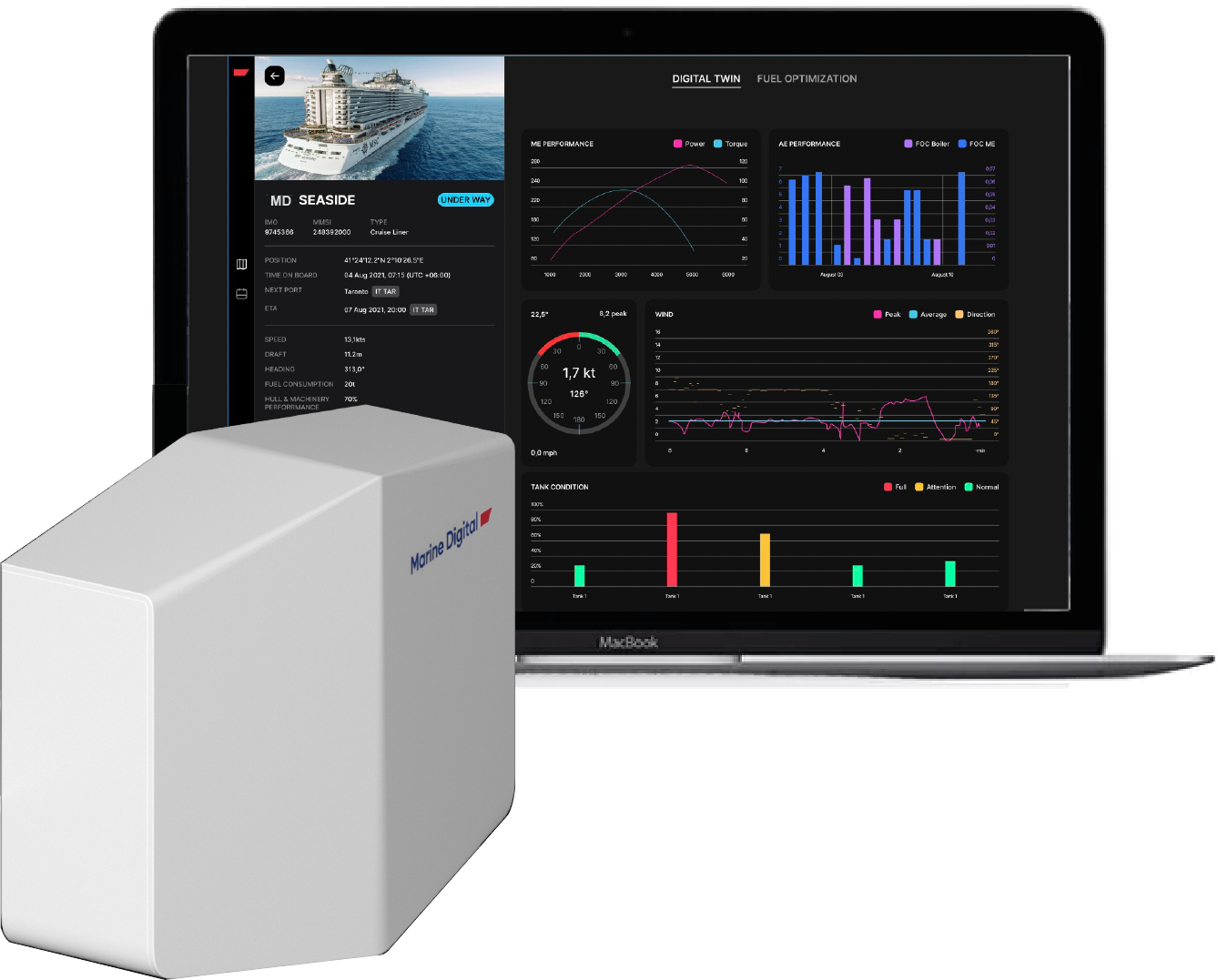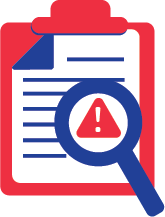Digitalization in the maritime / shipping industry
Digitalization and new developments in artificial intelligence, blockchain, IoT and automation are becoming more relevant for maritime transport. They help streamline existing processes, create new business opportunities, and transform supply chains
Digitalization and new developments in the field of artificial intelligence, blockchain, IoT and automation are becoming increasingly relevant for maritime transport. They help streamline existing processes, create new business opportunities, and transform supply chains and trade geography. Despite the potential, opportunities and benefits offered by these technologies, they also entail risks and potential costs for maritime actors in developing countries. Thus, it is necessary to create a level playing field. This policy brief discusses the role of interoperability and global standards, the importance of driving technological innovation while avoiding monopolistic outcomes, and the need to ensure that digitalization works towards the Sustainable Development Goals.
The impact of digitalization on maritime transport can be divided into the following five stages:
1. Examine your current state
Study the datasets used carefully. What types of data do you collect from your organization? Who uses this data and what does it serve? How is data managed throughout its life - how is it collected, verified, cleaned, distributed to downstream systems, protected and verified? With a thorough analysis of the data on which you make decisions and how they do it, you can begin to outline the data architecture that will be the starting point for your digital transformation.
2. Explore your future state
What do you want to do with your data in the ideal future? Where can this data bring the most value to your business? How could this support your organizational goals? Perhaps the data will help you demonstrate greater transparency in the face of increasing supply chain volatility. You may be planning aggressive business growth through increased bandwidth, customer acquisition, or infrastructure projects. Perhaps this data will help you improve the quality of service and achieve greater customer loyalty in a highly competitive market. Start with your organization's goals and work backwards to prioritize data.
3. Create a framework
«efore starting a digital transformation initiative, focus on master data management (as defined above). Create a structure that manages all of your datasets to ensure that data is accurate, validated, consistent, and ready to support automation and analytics across different user groups. There is a valuable lesson to be learned from the first wave of industries that embarked on digital transformation, many of which skipped this foundational step and found that without the right data governance model, their data-driven initiatives were not delivering the expected value.
4. Embrace data as an asset
Organizations moving from manual to digital operations often find data management a burden. This approach leads to missed opportunities, inefficiency and unnecessary risk. With a structured data governance structure and a digital repository of trusted data, your organization can begin to use data to reduce risk, improve service delivery, and drive growth through efficiency, innovation, and continuous optimization. But first, you must accept data as an asset in your organizational culture. The understanding that data is an asset must be done from the top down by stakeholders who have both an impact on the organization and an understanding of the value that data brings to the organization.
5. Be realistic about your capabilities
For the maritime industry, data requirements are quickly becoming more complex than in-house development systems can meet. For many, maintaining these capabilities internally is challenging, time-consuming, and distracting from the core business. Outsourced data management can provide the best of both worlds by allowing users to access the data they need to get their jobs done, while facilitating the effort required to manage the underlying tools and technologies that consume, cleanse, aggregate, and distribute that data for adoption. solutions.
The impact of digitalization on maritime transport can be divided into the following five stages:
1. Examine your current state
Study the datasets used carefully. What types of data do you collect from your organization? Who uses this data and what does it serve? How is data managed throughout its life - how is it collected, verified, cleaned, distributed to downstream systems, protected and verified? With a thorough analysis of the data on which you make decisions and how they do it, you can begin to outline the data architecture that will be the starting point for your digital transformation.
2. Explore your future state
What do you want to do with your data in the ideal future? Where can this data bring the most value to your business? How could this support your organizational goals? Perhaps the data will help you demonstrate greater transparency in the face of increasing supply chain volatility. You may be planning aggressive business growth through increased bandwidth, customer acquisition, or infrastructure projects. Perhaps this data will help you improve the quality of service and achieve greater customer loyalty in a highly competitive market. Start with your organization's goals and work backwards to prioritize data.
3. Create a framework
«efore starting a digital transformation initiative, focus on master data management (as defined above). Create a structure that manages all of your datasets to ensure that data is accurate, validated, consistent, and ready to support automation and analytics across different user groups. There is a valuable lesson to be learned from the first wave of industries that embarked on digital transformation, many of which skipped this foundational step and found that without the right data governance model, their data-driven initiatives were not delivering the expected value.
4. Embrace data as an asset
Organizations moving from manual to digital operations often find data management a burden. This approach leads to missed opportunities, inefficiency and unnecessary risk. With a structured data governance structure and a digital repository of trusted data, your organization can begin to use data to reduce risk, improve service delivery, and drive growth through efficiency, innovation, and continuous optimization. But first, you must accept data as an asset in your organizational culture. The understanding that data is an asset must be done from the top down by stakeholders who have both an impact on the organization and an understanding of the value that data brings to the organization.
5. Be realistic about your capabilities
For the maritime industry, data requirements are quickly becoming more complex than in-house development systems can meet. For many, maintaining these capabilities internally is challenging, time-consuming, and distracting from the core business. Outsourced data management can provide the best of both worlds by allowing users to access the data they need to get their jobs done, while facilitating the effort required to manage the underlying tools and technologies that consume, cleanse, aggregate, and distribute that data for adoption. solutions.
Policymakers and international organizations need to facilitate the interoperability of data-driven processes in international shipping and trade, including through international standards. One of the most successful international trade standards is the container. Initially, different companies used different sizes and boxes could not be used on all routes and modes of transport. Later, first nationally in the United States of America and then internationally through the International Organization for Standardization, the public sector agreed on the Organization's standards for intermodal containers known today. As port and shipping services are being digitized, data standards will be of equal importance. An example is blockchain applications where several shipping lines have recently begun developing technology solutions in collaboration with leading information technology companies. The challenge is to encourage the development and use of the necessary standards, including by the industry itself, while ensuring that they do not become closed standards that may exclude some participants, especially small companies from developing countries.
Developing laws, regulations and international instruments is a long and time-consuming process, while technology continues to advance at an exponential rate. To avoid regulatory gaps, it is important for today's policymakers and regulators to remember that they must be prepared for tomorrow's technologies. The technology standards development process can be led or coordinated by international organizations such as the United Nations Center for Trade Facilitation and Electronic Business or the International Organization for Standardization, which will ensure collaboration between all stakeholder groups. This will protect against dominance by a single company or interest group that sets the standards. Standards need to be digital platforms independent to enable future technology adoption. It is important to provide the governments of developing countries with the opportunity to participate in the setting of relevant global standards, for example, through capacity building and active participation in these international forums.
Developing laws, regulations and international instruments is a long and time-consuming process, while technology continues to advance at an exponential rate. To avoid regulatory gaps, it is important for today's policymakers and regulators to remember that they must be prepared for tomorrow's technologies. The technology standards development process can be led or coordinated by international organizations such as the United Nations Center for Trade Facilitation and Electronic Business or the International Organization for Standardization, which will ensure collaboration between all stakeholder groups. This will protect against dominance by a single company or interest group that sets the standards. Standards need to be digital platforms independent to enable future technology adoption. It is important to provide the governments of developing countries with the opportunity to participate in the setting of relevant global standards, for example, through capacity building and active participation in these international forums.
In Marine Digital we are constantly monitoring the innovation process in the maritime industry while aiming to support sustainable development in the most critical niches. We consider the efficiency of new technologies application as the highest priority for our team, and led by this principle we've already delivered to the industry companies such cases as:
Read also about Data Mining on ships. What does it take to leverage Big Data in maritime logistics?
The complex expertise of our team allows us to support a wide range of digital projects in the maritime industry, such as Marine Digital FOS (Fuel Optimization System).
During the development process, we have formed 4 solutions that are suitable for charters, shipowners and fleet managers of different types of vessels for:
- Vessel's digital twin. The technology allows to digitize analog vessels without new layers of sensors and expensive equipment installation for online monitoring of the fuel consumption and maintenance;
- Vessel's performance monitoring. The technology allows the fleet management to be notified regarding non typical situations onboard of the vessel and exclude risks during the voyage;
- Vessel's maintenance prediction. The technology allows to monitor and predict the critical equipment issues and reduce the costs of maintenance of the vessels.
Read also about Data Mining on ships. What does it take to leverage Big Data in maritime logistics?
The complex expertise of our team allows us to support a wide range of digital projects in the maritime industry, such as Marine Digital FOS (Fuel Optimization System).
During the development process, we have formed 4 solutions that are suitable for charters, shipowners and fleet managers of different types of vessels for:


TOP 5 factors contributing to lower fuel costs for Shipping companies
Get a presentation with a full description of the features and free pilot project with trial of Marine Digital FOS for 2 months
"Clicking the button, you consent to the processing of personal data and agree to the privacy policy"

Get an overview "The Pathway to Zero Carbon Shipping:
IMO Compliance and CII Optimization through SEEMP" on email and download it for FREE! Leave your email now!
"Clicking the button, you consent to the processing of personal data and agree to the privacy policy, as well as consent to subscribe to the newsletter. "
Аdvantage of Fuel Optimization System from Marine Digital:

Marine Digital FOS can be integrated with other system and third-party's solutions through the API. To implement vessel performance monitoring for any vessel, we are using mathematical algorithms, machine learning and the same equipment as in FOS. The more data we collect from vessels, the more precise reports and recommendations our system will perform according to your individual requirements in fleet management.
If you have any questions about the solutions and the Marine Digital System platform, write to us, we will be happy to answer
If you have any questions about the solutions and the Marine Digital System platform, write to us, we will be happy to answer

Increased business process speed

Reducing to zero the number of errors

Best offer to the clients

Reduction in operating expenses
Have a questions?





